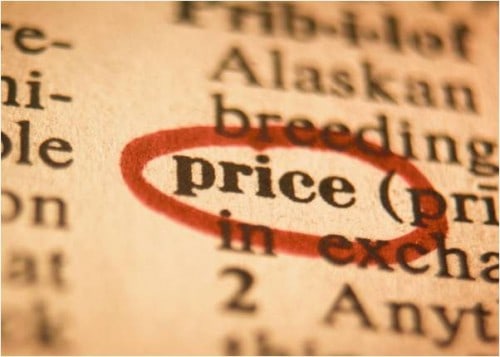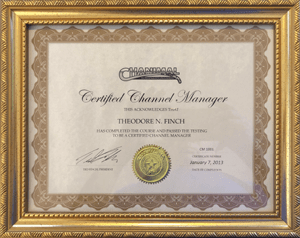How to Determine Pricing – in 2023
Pricing is one of the four “P’s” of the marketing mix. It is a marketing variable that can play a significant role in the success or failure of a product. Before you start your pricing, you must always create a competitive analysis. Your prospect will know the competition’s pricing–it would be a travesty if they know more about your market than you do. Go to the Competitive Analysis section if you need help. Attached HERE is a detailed sample showing features along with associated pricing.
Get Micro Consulting Help. Click HERE if you need quick help to get this figured out.
As a product manager (the person who typically sets pricing), you will need to consider most of the following items to have an effective pricing model
(HINT: Follow the methodology in ALL the sections below and you’ll typically be able to determine the best pricing–you can test and refine from here):
- Understand the rate card price (US and International), the pricing models (exceptions, bundles, forward pricing, etc.), and the overall “cost” of deployment for every competitor.
- Know the pricing models that work within complimentary markets. For example, if you are selling desktop publishing software, you may also wish to know the pricing for other desktop publishing products and take it into account.
- Understand the overall cost and pricing of alliances and others that help create the “whole” product. By understanding your complimentary products, especially alliances that are competitors of each other, you may reduce your customer’s overall cost by suggesting that they choose a different product. In desktop video, if the customer only has 100k to spend, rather than reducing your price, you may recommend that they get the savings by selecting a different camera, 3D package, etc. This information helps you deliver the “whole” product at a competitive price without eroding your pricing.
- Know all of the pricing issues that face our customers. Understand where we can help our customers find pricing relief within the entire “system”—not by just discounting our own product. See above.
- Establish and continually refine the pricing models and the overall pricing matrix. Provide pricing information such as the following:
- Published rate cards for sales (either an MSRP or some equivalent standard pricing).
- Exception policies and examples (i.e., you are willing to allow the 100k unit pricing, if the customer gives you an exclusive for the remaining 100k units that they may purchase (forward pricing model)
- OEM pricing by components
- Alliance pricing (you want your alliances to have your demo equipment and you may wish to discount it for their non-resale use).
- Sample (NFR) pricing for resellers.
- Support pricing and maintenance agreements
- Upgrade pricing for existing customers. For example, you may list the latest software release for $599, but sell the upgrade for $99 to existing users.
- System Integrator & VAR discount schedule – varied according to their authorization level.
- Peripheral and component pricing (with/without the software, keyboard, customizable remote, game controllers, etc.).
- Alliance add-on product pricing. You may wish to cross-sell each other’s products and enable both sales teams to have bundled pricing.
- Both US and International/localized pricing matrix
- Create “Price Savings Build-up,” and “Reduce to Simple,” “Price vs. Cost,” examples, along with “What works best” pricing dialogues from the field.
- Disseminate this information regularly whenever it is updated.

Establishing Pricing
Price enables us to make the appropriate margins to run a successful business–over the life cycle of the product (not always up-front). It is also a means of distinguishing our offering from those of competitors–positioning. In addition, the price is a tool for communicating with customers and influencing the way they buy. The four components of a pricing program include 1) objectives, 2) strategy, 3) structure and 4) price levels.
1. Pricing Objectives
There are over twenty pricing objectives that we might consider. The following are four that I typically concentrate on:
- Target market share. The objective for this strategy is to maximize market share–sometimes at the cost of maximizing early profit.
- Target return on investment. This strategy attempts to maximize the return on investment.
- Sales growth. This is similar to maximizing market share, except it is expressed in the difference in sales over time.
- Maximize long-run profit. This strategy is not dependent on making a “quick buck,” but rather on making the most from a product during it’s entire life cycle.
We would typically include a description here as to which of the objectives we favor and how we expect to apply them. When it is a start-up, I am always trying to target market share.
2. Pricing Strategies
Pricing strategies fall into one of two categories: market-based and cost-based.
Market-based strategies include the following*:
- Floor pricing. Charging a price that just covers costs. This approach is usually selected to maintain a presence in the market given the competitive environment.
- Penetration pricing. Charging a price that is low relative to a) the average price of major competitors and b) what customers are accustomed to paying.
- Parity pricing (going rate). Charging a price that is roughly equivalent to the average price charged by the major competition.
- Premium pricing (skimming). The price charged is intended to be high relative to a) the average price of major competitors, and what customers are accustomed to paying.
- Price leadership pricing. Usually involves a leading firm in the industry making fairly conservative price moves, which are subsequently followed by other firms in the industry. This limits price wars and leads to fairly stable market shares.
- Stay out pricing. The firm prices lower than demand conditions require, to discourage market entry by new competitors.
- Bundle pricing. A set of products or services are combined and a lower single price is charged for the bundle than would be the case if each item were sold separately.
- Value-based pricing. Different prices are set for different market segments based on the value each segment receives from the product or service.
- Cross-benefits pricing. Prices are set at or below cost for one product in a product line, but relatively high for another item in the line which serves as a direct complement (e.g., certain brands of cameras and film).
Cost-based strategies include:
- Markup pricing. Variable and fixed costs per unit are estimated, and a standard markup is added. The markup is frequently either a percentage of sales or costs.
- Target return pricing. Variable fixed costs per unit are estimated. A rate of return is then taken times the amount of capital invested in the product, and the result is divided by estimated sales. The resulting return per unit is added to the unit costs to arrive at a price.
In tech, we typically do not use cost-based pricing. If your computer chip only costs $2.50, you wouldn’t mark it up to get $5.00–since it may have cost $5 million in development cost. Instead, it may sell for $150.
Exercise
If I had a start-up (where I needed to get my initial sales and get things jump-started), and was trying to penetrate an existing market, my objective may be to get my initial sales, so I would use a penetration strategy. However, so I don’t discredit my brand, I would use parity pricing–then I am perceived to be as good as the competition. So, if the competition were $499, I might say my regular price was also $499, but during the initial launch, it is 40% off so it would be $299.
Then I get my penetration price (where pricing is not a major objection), while maintaining the perceived value of the existing products. I can combine pricing with a promotion. If it is during a limited time, then I also present a compelling reason for the prospect to act sooner–which helps my overall objective of initial sales.
Pricing Video
Below is a video (from Chanimal’s Alma Mater (BYU)) that shows how pricing strategies can be one of the primary differentiators for a company. Very engaging video format.
3. Pricing Structure
Implementing a pricing strategy requires a pricing structure. The structure determines
- Which product or service will be priced
- How prices vary for different customers and by products and services and
- The time and conditions of payment.
4. Pricing Levels
Price levels refer to the actual price charged for each product or service. these prices can vary according to product cost variations over time, the desired value perception, the width of price gaps between options or between volume breaks, and the demand sensitivity (elasticity) within the price range. Pricing levels can also be changed through promotions to reduce inventory or encourage the adoption of new add-on services. Pricing levels would typically be found within the price matrix.
Resources
- Click here for an example of how pricing is applied within the marketing plan.
- Click here for an entire site dedicated to Software Pricing. Make sure you view their resource section which contains several pricing videos.
- Wilson Web has a good article on pricing within the context of a marketing plan that is very similar to the information above. I did notice the name has been changed to Practical Ecommerce–but the same pricing article exists.
- How to Price Software Whitepaper (PDF). Created by SoftwarePricing.com.
Several pricing strategies above are expounded on within the book from Michael Morris, Market Oriented Pricing, Illinois, NTC Publishing Group, 1995 (older but still applicable and highly recommended).
Concurrent or Fixed Per Seat Model
Here is a video that describes the difference:
Price Savings Buildup
Whenever you list your pricing, you should always do a price savings buildup. This is where you show how your price is “justifiable” based on the competition or alternative options. You are not finished with pricing until you have created the dialogues needed by sales to justify your pricing. Without duplicating content, you can read about these dialogues in the Chanimal online sales manual HERE (Highly recommend you review this section).
More Pricing Topics & Examples
- See the marketing plan section with actual examples of Price Matching, Introductory Pricing Competitive Pricing Student Pricing, SRP versus Street Pricing, Selling Value – Not Price
Example of a Pricing Savings Build-up
- ReviewInc (opens in its own window) has an example that puts pricing in perspective (a price savings buildup). Notice you are highlighting how affordable (40% less than the competition), but the time savings (automation), and the fact you have unlimited users (versus others that charge for it). Their pricing is some things listed, sometimes not–but typically not if it generates more leads.
- Ugru also shows how the price is less than the combined expense of what it replaces.

Reseller Margins – has been moved to its own MARGINS page
Contact Info
Chanimal, Inc.
12109 Lake Stone Dr
Austin, TX 78738
512-263-9618
Click HERE to Email
Follow us on Facebook
NOTICE
I join a LOT of affiliate programs (connoisseur–like to see what they do), including Amazon, so there may be links throughout Chanimal.

